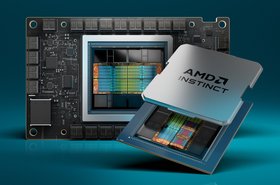When the rollout of a new data center infrastructure management (DCIM) tool fails to meet expectations, the product or its provider is often blamed.
Yet, the success of an infrastructure management tool depends on more than technology and functionality – how the software is rolled out across the organization is equally important.
Issues often arise at the preparation stage and trickle down to problems during implementation.
Overly complex solutions, poor planning, tight budgets, and a lack of employee involvement can all delay a rollout. Having a strategic management plan in place is crucial for success.
Divide and conquer
Project managers should treat each element of the implementation as an individual project. Assigning roles and responsibilities while holding regular meetings will improve your chances of a seamless deployment and will deliver consistent wins to both internal teams and stakeholders.
Consulting the software vendor early and often is also key, as they have the experience and knowledge needed to overcome obstacles, find alternative paths, and implement a solution that meets your specific needs.
Before kicking off the implementation program, it’s important to ensure that all processes are documented and working properly. After all, identifying and resolving issues at the preparation stage will eliminate setbacks down the road.
Prior to implementing an infrastructure management tool, IT teams must first:
- Assess and document the current status of the data center infrastructure, including systems, processes, and data
- Define and contact all relevant stakeholders
- Set clear, realistic goals to achieve as well as criteria for measuring the success of the implementation
- Identify the required use cases, end users, and team responsible for user acceptance testing
- Define tasks, responsibilities, and teams responsible for implementation
- Include all the affected tools, processes, systems, department functions, relevant owners, and technical specialists in the process
- Bring in consultants to give you a more objective view of the current status and to optimize the organizational aspects
- Ensure that you have sufficient in-house staff available to respond promptly to queries
- Develop an appropriate training method for users
Choose a strategic implementation process model
The next mountain to tackle is deciding which implementation approach to take. These examples can help you choose the right process model to follow for your organization.
First, let’s discuss a site-by-site approach. When a major telecommunications provider was pursuing a strategy of international expansion, it was advised to follow a site-by-site approach model to avoid the technical risks of a big bang, excessive demands on the organization, and disruption to operations.
The aim was to switch individual, older sites with local building control systems and non-routable field buses to IP-based monitoring (SNMP) by means of state-of-the-art power consumption and air conditioning measurement technology.
Construction contracts for the upgrade work were awarded to different service providers for each site and their activities were spread out over time.
As a result, they were able to efficiently manage service providers, distribute costs and workload over time, and better allocate costs to the individual sites.
Additionally, sites that worked together in the same redundancy group were upgraded one after the other to avoid a simultaneous power shutdown and to ensure business continuity.
The same model is also suitable when acquiring data center sites and for gradual rollout of the infrastructure management solution.
The next example focuses on an asset-by-asset model. When a market-leading colocation provider wanted to accelerate its provisioning processes to enable it to provide the services ordered by customers faster, they focused on one specific asset class at a time. With many sites, a project that incorporated all of the data would have been extremely time-consuming.
With an asset-to-asset model, companies can take a targeted approach when addressing pain points within specific device classes and processes.
Unlike the traditional domain model, which is built up of layers, there is no need for input from all departments, which makes for a smoother implementation.
This model also paved the way for more budget to be released for additional services.
The third process model I recommend takes the maturity of the infrastructure into consideration.
When a public authority IT service provider was looking for a new tool to manage its IT and data center infrastructure, extending across more than 2,000 buildings throughout 1,000 cities, and offer new infrastructure services to customers, the plan was to use different approaches depending on the maturity of IT operations or the level of automation.
This model requires a thorough analysis of the existing situation. The service provider initially tackled its infrastructure documentation, due to it having the lowest level of maturity, and laid the foundations for the other levels.
It then moved on to the next maturity level, including functions, such as visualization and order management, process optimization, and cost and quality management.
The third and highest level of maturity involved the integration of a store experience. The end goal was to create an effective provision of services via a standardized product catalog containing more than 800 infrastructure components and 200 services.
Making a clear distinction between horizontal layers and task packages delivered an extremely reliable data and process basis for services and the service catalog.
Best practices to implement an infrastructure management tool
As stated before, implementation failures are rarely caused by the technical design of the tools. Rather, the selection process and errors during implementation are the common culprits. By following these best practices, you can ensure a smooth implementation:
Take a modular tool approach – The right approach is a solution built on a strong core standard, with a data model that is both highly prefabricated and easily customizable via configuration. Such solutions provide the best possible support for specific processes within a given organization and are ideally suited for the implementation models discussed above. This significantly reduces the complexity associated with rollout and operation.
Choose a solution that’s easy to integrate and scale – Data center infrastructure is constantly changing, which means that new tools for managing internal and external services are frequently added. Therefore, it’s essential to extend the management system quickly and efficiently.
Consider the program duration – When it comes to data center infrastructure, strategic deadlines should be avoided. Implementation is simply too complex for time constraints. If only a fraction of the functions and benefits are available on the chosen date, the program will be considered a failure, regardless of the many benefits already achieved.
Select the right implementation method – Every approach has its pros and cons. Choose the one best suited to your unique situation.
Plan a phased rollout for quick wins – Introducing an infrastructure tool is typically a time-consuming task. To keep the stakeholders engaged, benefits need to be repeatedly highlighted and communicated.
Focus on the functions that deliver the biggest benefits first – To keep stakeholders content and teams motivated, demonstrate progress with tiny wins.
Don’t postpone organizational and process change – Implementation is not automatically a success just because the software is up and running. The tool should always be used to initiate internal change and to challenge and optimize structures and processes.
Adapt systems, modules, processes, and training – Data center infrastructure is not set in stone, especially not over the entire lifetime of the program. Flexibility is key.
Involve IT teams – An unused tool is clearly a wasted investment. Therefore, employees must be involved in the implementation process. This will ensure widespread knowledge of the application and deliver a faster ROI.









